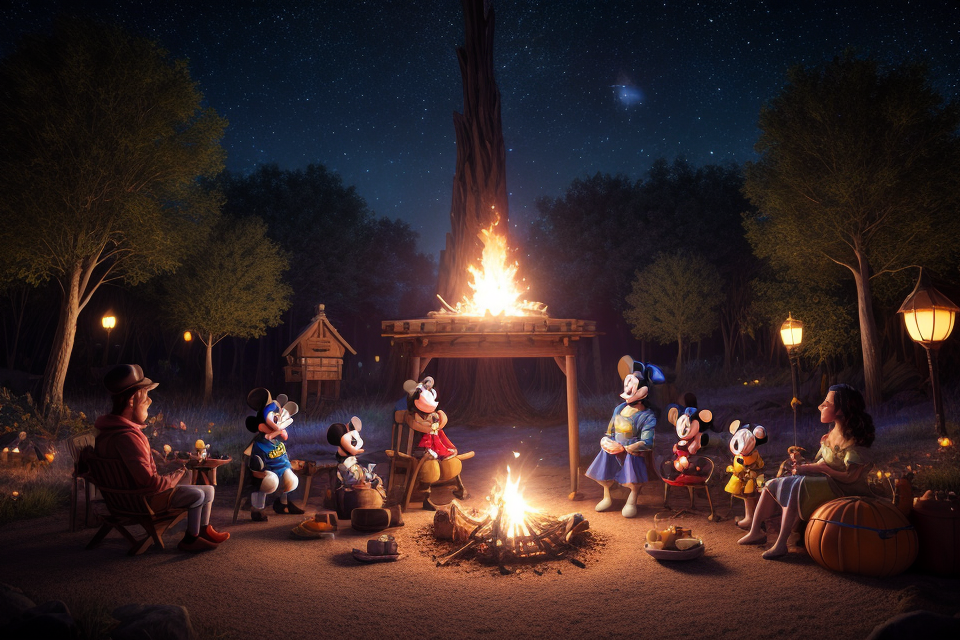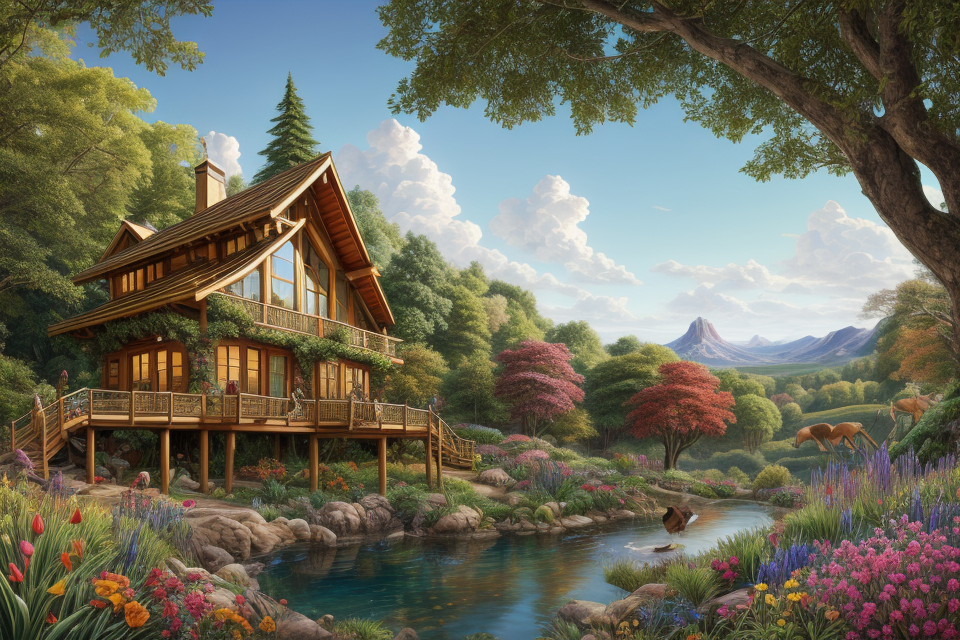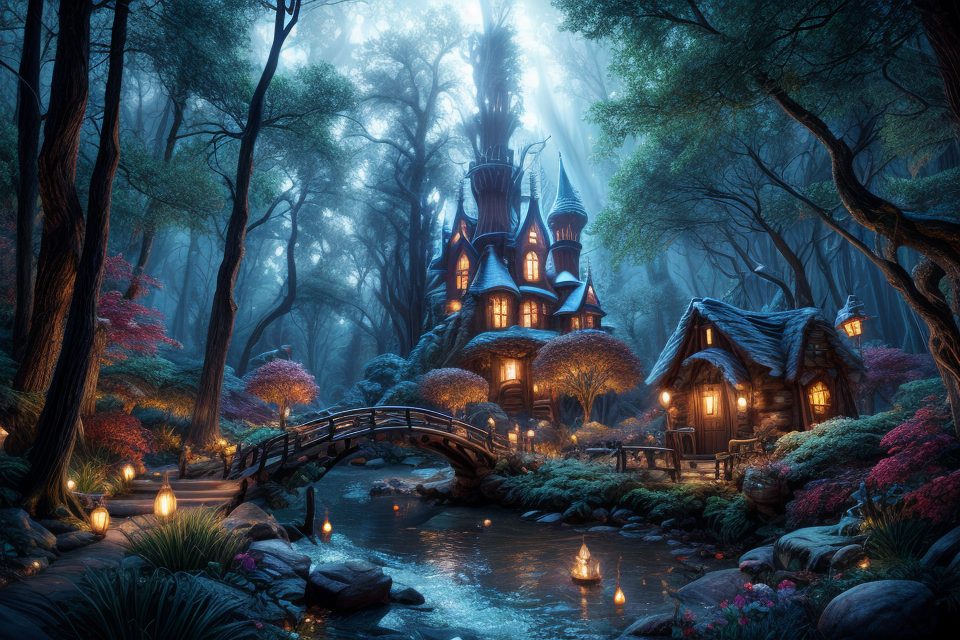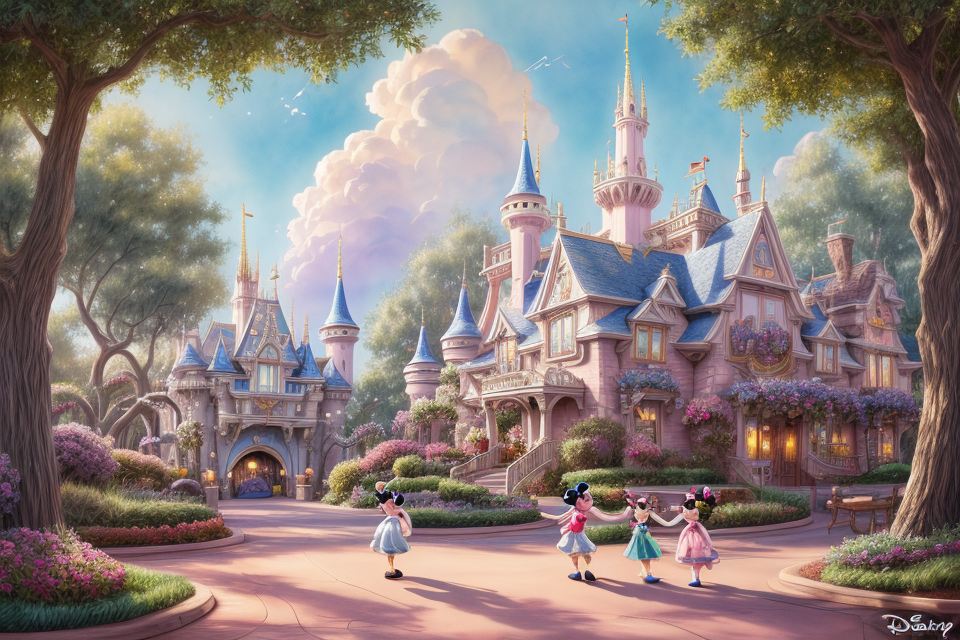
The art of storytelling is an age-old tradition that has been passed down through generations. One of the most renowned storytellers of our time is none other than Disney. The Walt Disney Company has been creating magical narratives for decades, captivating audiences of all ages with its timeless tales. But how does Disney create such enchanting stories? In this article, we will delve into the secrets behind Disney’s magical narratives, exploring the company’s unique approach to storytelling and the techniques it uses to bring its stories to life. So, let’s get ready to unravel the art of storytelling as we discover the secrets behind Disney’s magical narratives.
The Foundations of Disney Storytelling
Walt Disney’s Vision and Philosophy
The Power of Imagination
Walt Disney, the man behind the Disney empire, was a firm believer in the power of imagination. He envisioned a world where the impossible could become possible through the art of animation. He believed that animation was not just a form of entertainment, but a medium through which one could create magic and evoke emotions in the audience. Disney’s approach to storytelling was rooted in the belief that imagination could take audiences on a journey to a world beyond their wildest dreams.
The Importance of Emotion
In addition to the power of imagination, Walt Disney also placed great importance on evoking emotions in his stories. He believed that a story that could make an audience laugh, cry, or feel any other emotion strongly was a story that would leave a lasting impact. Disney’s stories were not just about entertaining, but about connecting with the audience on a deeper level. He understood that emotions were the key to creating a magical experience for the audience, and it was this understanding that set Disney’s storytelling apart from the rest.
Through his vision and philosophy, Walt Disney revolutionized the art of storytelling and created a legacy that continues to inspire generations.
Disney’s Timeless Themes
Disney’s timeless themes have been a cornerstone of the company’s storytelling success for decades. These themes are universal and resonate with audiences of all ages, making Disney’s stories truly magical. In this section, we will explore the three key themes that run throughout Disney’s narratives: love and friendship, courage and perseverance, and growth and transformation.
Love and Friendship
Love and friendship are two of the most recurring themes in Disney’s storytelling. These themes are often intertwined, as the bonds of friendship can be just as powerful as those of romantic love. In many Disney films, the central characters are driven by their desire to protect or preserve the relationships that matter most to them. For example, in “Frozen,” Anna’s love for her sister Elsa drives the plot, while in “Toy Story,” the bond between Woody and Buzz Lightyear is the central focus of the story.
Disney films often depict love and friendship as powerful forces that can overcome any obstacle. This message is especially important for young audiences, who may be learning about the importance of relationships for the first time. By showing that love and friendship can conquer even the most daunting challenges, Disney helps to instill a sense of hope and optimism in its viewers.
Courage and Perseverance
Courage and perseverance are other essential themes in Disney’s storytelling. Many of the company’s protagonists are faced with seemingly insurmountable obstacles, but they never give up. Instead, they draw on their inner strength and determination to overcome their fears and achieve their goals.
In “The Lion King,” Simba must overcome his fear of taking on the mantle of leadership from his father, Mufasa. In “Aladdin,” Aladdin must find the courage to stand up to the powerful Jafar and save the princess he loves. In both cases, the characters’ courage and perseverance are rewarded with success and happiness.
Growth and Transformation
Finally, growth and transformation are crucial themes in Disney’s storytelling. Many of the company’s protagonists undergo significant changes throughout the course of the story. Whether it’s learning to let go of the past, overcoming a fear, or discovering a new sense of purpose, Disney characters are often forced to adapt and grow in order to succeed.
In “Beauty and the Beast,” Belle learns to look beyond the Beast’s appearance and see the kind, compassionate person within. In “The Little Mermaid,” Ariel must make a difficult choice between her love for Prince Eric and her loyalty to her underwater kingdom. In both cases, the characters’ growth and transformation are key to the resolution of the story.
Overall, Disney’s timeless themes are an essential part of what makes the company’s storytelling so powerful and enduring. By exploring themes such as love and friendship, courage and perseverance, and growth and transformation, Disney is able to create narratives that resonate with audiences of all ages and backgrounds.
Disney’s Storytelling Techniques
Characters and Archetypes
Hero’s Journey
Disney’s storytelling often employs the Hero’s Journey, a narrative structure that follows a protagonist’s transformational journey. This journey typically consists of several stages, including the call to adventure, the road of trials, and the ultimate triumph of the hero. By using this structure, Disney creates a relatable and engaging narrative that captures the audience’s imagination.
Antagonist and Conflict
Another essential element of Disney’s storytelling is the presence of a formidable antagonist and conflict. The antagonist serves as a catalyst for the hero’s journey, creating tension and driving the story forward. Disney’s antagonists are often complex characters with their own motivations and desires, adding depth to the narrative and making them more compelling to the audience.
Supporting Characters and their Roles
Supporting characters play a crucial role in Disney’s storytelling, adding nuance and complexity to the narrative. These characters often serve as foils to the hero, highlighting their strengths and weaknesses. Additionally, they provide opportunities for character development and growth, deepening the audience’s emotional connection to the story. Disney’s storytelling also employs a diverse range of supporting characters, reflecting the richness and complexity of the human experience.
Plot and Structure
Three-Act Structure
Disney’s narratives often adhere to the three-act structure, a fundamental storytelling technique comprising three distinct parts: setup, confrontation, and resolution. This structure allows for a clear and organized progression of events, providing a clear beginning, middle, and end.
Concept of “Acts of Story”
Each act within the three-act structure can be further divided into “acts of story,” which are smaller sections of the narrative that focus on specific elements, such as character development, plot twists, or emotional arcs. This approach enables a more detailed and nuanced storytelling experience, allowing for greater depth and complexity in the narrative.
Rising Action and Climax
The rising action refers to the build-up of tension and anticipation leading to the climax, which is the pinnacle of the story where the central conflict is resolved. Disney’s narratives carefully construct the rising action to create a sense of anticipation and suspense, while the climax serves as the emotional high point of the story, delivering a satisfying resolution to the audience. By masterfully employing these plot and structure techniques, Disney has been able to create enchanting and memorable stories that captivate audiences of all ages.
Visual Storytelling
Animation Techniques
Disney’s animation techniques have been a crucial element in creating its magical narratives. From the early days of hand-drawn animation to the latest computer-generated imagery, Disney has always pushed the boundaries of what is possible on screen. One of the most notable techniques is the use of “cell animation,” where each frame is drawn on a transparent cell, allowing for a smooth transition between frames. This technique was used in the early Disney films such as “Snow White” and “Cinderella.”
Art and Background Design
Disney’s background design is another crucial element in creating its magical narratives. The backgrounds are not just a backdrop, but they play an important role in telling the story. The backgrounds are designed to be immersive and transport the viewer into the world of the story. In “The Lion King,” for example, the backgrounds are designed to look like the African savannah, giving the audience a sense of being in the middle of the story.
Music and Sound Effects
Disney’s use of music and sound effects is another key element in its storytelling. The music is used to enhance the emotional impact of the story and to create a sense of atmosphere. In “Beauty and the Beast,” for example, the music is used to create a sense of enchantment and mystery. The sound effects are also used to create a sense of immersion, such as the sound of footsteps in “Snow White” or the sound of a waterfall in “Frozen.”
In conclusion, Disney’s visual storytelling techniques, including animation, art and background design, and music and sound effects, are all crucial elements in creating its magical narratives. These techniques are used to transport the audience into the world of the story, to enhance the emotional impact of the story, and to create a sense of immersion.
Disney’s Storytelling Legacy
Impact on Pop Culture
Disney’s storytelling legacy has had a profound impact on pop culture, transcending beyond the realm of animation and influencing various aspects of our daily lives. The enchanting tales and memorable characters have left an indelible mark on popular culture, shaping the way we perceive and engage with stories.
Disney Princesses and Beyond
Disney princesses, in particular, have become cultural icons, representing a wide range of traits and values that resonate with audiences of all ages. From Snow White’s kindness and purity to Mulan’s courage and determination, each princess embodies unique qualities that have inspired countless individuals. Beyond the princesses, other characters like Mickey Mouse, Donald Duck, and Goofy have also become beloved figures, symbolizing joy, humor, and friendship.
Iconic Scenes and Quotes
Disney films are known for their iconic scenes and unforgettable quotes, which have become part of our collective consciousness. “Part of Your World” from The Little Mermaid, “A Whole New World” from Aladdin, and “Let It Go” from Frozen are just a few examples of songs that have become anthems, resonating with audiences worldwide. The powerful quotes, such as Bambi’s “If you can’t say something nice, don’t say anything at all,” and Simba’s “Everything you see, everything you hear, it’s all part of the show,” have left a lasting impact on how we perceive life and its experiences.
Disney’s storytelling has also had an impact on fashion, inspiring trends and styles that reflect the themes and characters from their films. Merchandise like clothing, accessories, and toys bearing Disney designs have become a significant part of the global market, reflecting the company’s influence on pop culture.
Overall, Disney’s storytelling has left an indelible mark on pop culture, transcending beyond animation and permeating various aspects of our daily lives. Their impact on our language, fashion, and values is a testament to the power of storytelling and its ability to connect with audiences on a deep and meaningful level.
Influence on Storytelling and Media
Disney’s Impact on Animation
Disney’s influence on animation has been immense, as they pioneered the use of synchronized sound, full-color animation, and the development of the narrative techniques that would come to define the genre. The company’s innovative use of technology, such as the multiplane camera, allowed for greater depth and complexity in the visual storytelling, creating a more immersive experience for audiences.
Storytelling Lessons from Disney
Disney’s approach to storytelling has been studied and analyzed by filmmakers and storytellers for decades. The company’s focus on character development, plot structure, and visual storytelling has influenced countless filmmakers and writers, making Disney’s films a benchmark for the industry. The company’s emphasis on creating emotionally resonant stories with relatable characters has helped to make their films timeless classics.
Disney’s Continued Evolution
Despite being in the industry for over 90 years, Disney continues to evolve and push the boundaries of storytelling. The company’s forays into live-action filmmaking, as well as their acquisition of Lucasfilm and Marvel, have allowed them to expand their storytelling repertoire and continue to captivate audiences of all ages. Disney’s commitment to innovation and creativity ensures that their storytelling legacy will continue to thrive for many years to come.
The Disney Storytelling Process
Concept Development
Idea Generation
The first step in the Disney storytelling process is idea generation. This is where the creative team comes up with a variety of ideas for potential stories. Disney has a long history of drawing inspiration from classic literature, mythology, and folklore, but they also look for unique and original ideas that will capture the imagination of their audience. The team may brainstorm for weeks or even months, coming up with hundreds of ideas before settling on the ones that have the most potential.
Research and Inspiration
Once the team has a few ideas that they want to pursue, they begin the research phase. This is where they dive deep into the chosen topic, researching the history, culture, and folklore surrounding it. They also look for inspiration from other sources, such as art, music, and film. This research helps the team to understand the subject matter and to develop a unique perspective on it.
Pitching and Approval
After the research phase, the team begins to pitch their ideas to the higher-ups at Disney. They present their ideas in the form of storyboards, scripts, and animatics, which are essentially rough animations that show the flow of the story. The pitch is an opportunity for the team to sell their idea and to get feedback from the people who will ultimately decide whether or not to greenlight the project. If the pitch is successful, the team moves on to the next phase of the Disney storytelling process: concept development.
Overall, the concept development phase is where the team fleshes out the details of the story. They work on character development, plot points, and visual design, creating a fully realized world that will captivate audiences. The Disney storytelling process is a collaborative effort that involves many different teams working together to create a magical narrative that will transport viewers to another world.
Writing and Revisions
Outlining and Scriptwriting
Disney’s storytelling process begins with outlining and scriptwriting. The writing team starts by brainstorming ideas and developing a plot outline that captures the essence of the story. This process involves extensive research, character development, and story structure. Disney’s writers ensure that each story has a clear beginning, middle, and end, and that the narrative is compelling and engaging.
Once the outline is complete, the scriptwriting process begins. Disney’s writers create a detailed script that includes dialogue, action, and description. The script serves as a blueprint for the entire production process, ensuring that every aspect of the film aligns with the story’s narrative. Disney’s writers work closely with directors and animators to ensure that the script is translated onto the screen accurately.
Collaboration and Feedback
Disney’s storytelling process is a collaborative effort. The writing team works closely with directors, animators, and other production teams to ensure that the story is brought to life accurately. Feedback is a crucial part of the process, and Disney’s writers are open to suggestions and criticism. This collaborative approach ensures that the final product is a culmination of multiple perspectives and creative minds.
Adaptations and Inspirations
Disney’s storytelling process often involves adaptations and inspirations from various sources. The company has adapted classic literature, fairy tales, and folklore into films that captivate audiences of all ages. Disney’s writers also draw inspiration from real-life experiences, cultural traditions, and current events. The company’s adaptations and inspirations allow for a diverse range of stories that resonate with audiences worldwide.
Production and Implementation
Voice Acting and Casting
The process of casting voice actors for Disney films is a crucial aspect of the production and implementation stage. Disney’s voice casting process is highly selective, with the company seeking actors who can not only deliver an impressive performance but also embody the essence of the character they are portraying. Disney’s casting directors carefully evaluate each candidate’s vocal range, tone, and acting ability to ensure that they can bring the character to life in a way that resonates with audiences. For instance, in the movie “Aladdin,” the casting of Robin Williams as the Genie was a masterstroke, as his comedic timing and infectious energy brought the character to life in a way that captivated audiences of all ages.
Animation and Visuals
Disney’s animation and visuals play a significant role in the production and implementation stage of their magical narratives. The company’s commitment to detail and quality is evident in every frame of their films. Disney’s animators utilize a combination of traditional and digital techniques to create visually stunning and realistic environments, characters, and scenes. They also employ advanced technologies such as motion capture and computer-generated imagery (CGI) to enhance the animation process and create a more immersive experience for viewers. In “The Lion King,” for example, the visuals were so stunning that they perfectly captured the essence of the African savannah, making the audience feel as if they were part of the story.
Music and Sound Design
Music and sound design are essential components of Disney’s magical narratives. The company’s composers and sound designers work tirelessly to create original scores and sound effects that perfectly complement the visuals and enhance the overall storytelling experience. Disney’s music is often iconic and memorable, with songs that stay in the audience’s head long after they’ve left the theater. The use of music and sound effects in Disney films also helps to create a sense of tension, excitement, or sadness, depending on the scene. In “Beauty and the Beast,” the use of music and sound effects played a crucial role in creating a magical atmosphere, making the audience feel as if they were part of the enchanted castle.
Marketing and Distribution
Promotion and Advertising
Disney’s marketing and advertising campaigns play a crucial role in creating anticipation and excitement for their upcoming films. From teaser trailers to elaborate press junkets, Disney carefully crafts each promotional opportunity to build a sense of anticipation and excitement among audiences. The company also employs extensive social media campaigns, leveraging platforms like Twitter, Instagram, and Facebook to connect with fans and create a buzz around their films.
Disney’s Mark on Cinema
Disney has had a profound impact on the world of cinema, shaping the industry in ways that go beyond their own films. From pioneering animation techniques to revolutionizing the theme park experience, Disney has consistently pushed the boundaries of what is possible in storytelling and entertainment. Their influence can be seen in the work of countless filmmakers, who have been inspired by Disney’s magical narratives and have sought to emulate their success.
Global Reach and Appeal
Disney’s films have a global reach and appeal that is unmatched by any other studio. Their movies are translated into dozens of languages and shown in theaters all over the world, making them accessible to audiences of all ages and backgrounds. This global reach is due in part to Disney’s commitment to diversity and inclusion in their storytelling, which ensures that their films resonate with audiences from all corners of the globe.
FAQs
1. How does Disney come up with new story ideas?
Disney’s story ideas come from a variety of sources. They often draw inspiration from classic literature, fairy tales, and mythology. They also look to nature, science, and history for inspiration. Additionally, Disney often collaborates with other companies and individuals to create new stories.
2. What is the process for creating a Disney story?
The process for creating a Disney story typically begins with a brainstorming session, where ideas are generated and discussed. From there, a story team is assembled, which includes writers, artists, and animators. They work together to develop the story, creating an outline, writing the script, and designing the characters and settings. The story is then presented to executives for feedback and approval.
3. How does Disney ensure that its stories are timeless and appealing to all ages?
Disney ensures that its stories are timeless and appealing to all ages by focusing on universal themes and emotions. They explore themes such as love, friendship, and adventure, which are relatable to people of all ages. Additionally, Disney uses humor, action, and music to engage audiences and keep them entertained.
4. How does Disney maintain consistency in its storytelling across different media?
Disney maintains consistency in its storytelling across different media by establishing a clear vision for each story. They ensure that the key elements of the story, such as the characters, settings, and themes, are consistent across all platforms. Additionally, Disney has a rigorous approval process for all storytelling across its various divisions, which helps to maintain a consistent tone and style.
5. How does Disney adapt classic stories for modern audiences?
Disney adapts classic stories for modern audiences by updating the themes and characters to be more relatable to today’s audiences. They also incorporate modern technology and techniques to enhance the storytelling and create a more immersive experience for viewers. Additionally, Disney often adds humor and pop culture references to make the stories more relevant to modern audiences.


